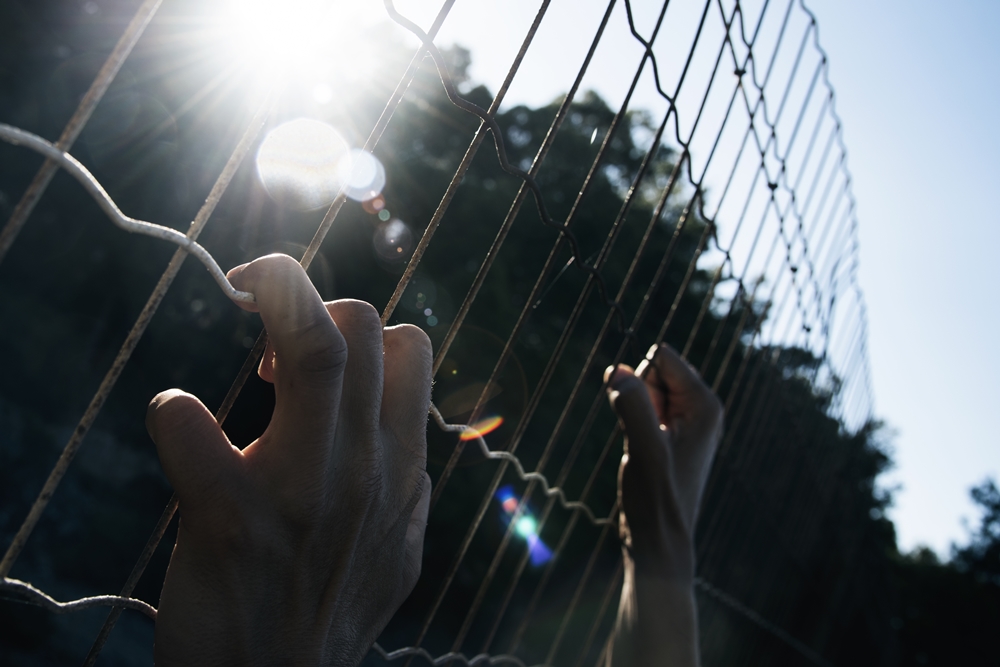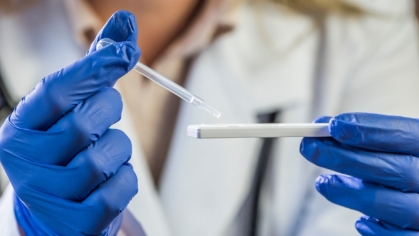Migrant Detention and Deportation in New Jersey Presented Unique Challenges to Curb Spread of COVID-19, Says Rutgers–Camden Researcher
Migrant detention and deportation in New Jersey presented unique challenges that undermined attempts at curbing the spread of the COVID-19 virus in the early days of the pandemic, according to new Rutgers University–Camden research.

The research article presents an account of the pandemic response in four New Jersey facilities where migrants were detained as of March 21 Bergen, Essex, and Hudson County jails, and Elizabeth Detention Center.
“Especially in those early days, New York and New Jersey were the epicenters of the virus spread, so we confirmed our fears that this situation was really ripe for disaster,” says Sarah Tosh, an assistant professor of sociology at Rutgers University–Camden.
Tosh and Rutgers University–New Brunswick researchers Ulla Berg and Kenneth Sebastian León focus on New Jersey as a case study to examine the relationship between COVID-19 and processes of migrant detention and deportation in their new paper, titled “Migrant Detention and COVID-19: Pandemic Responses in Four New Jersey Detention Centers,” published in the Journal on Migration and Human Security.
The article presents an account of the pandemic response in four New Jersey facilities where migrants were detained as of March 21 – Bergen, Essex, and Hudson County jails, and Elizabeth Detention Center.
The researchers conducted 15 in-depth interviews with wardens, lawyers, advocates, and formerly detained migrants between August and November 2020.
Tosh says at the outset of the pandemic, the researchers – who have previously studied the harms and costs of migrant detention and deportation – were concerned that these populations would be particularly affected, and the existing problems at these facilities would be exacerbated or present obstacles to the mitigation of COVID-19.

Tosh notes that there were several factors contributing to a basic lack of trust in the facilities among detainees and inmates.
The Rutgers–Camden researcher notes that these facilities already have a long history of health grievances, as reported by U.S. Department of Homeland Security audits, the media, and detainees and their lawyers.
“So, when the pandemic hit, some of these problems showed up in our research as well,” she says.
The Rutgers University researchers found, for instance, issues of proper hygiene and cleanliness, and reports of insufficient personal protective equipment provided, including soap that was unavailable or “weaker” – perhaps being diluted – as the pandemic continued.
At Elizabeth Detention Center – the subject of an ongoing lawsuit, she says – detainees asked for more effective cleaning protocols and received disinfectant products that were so strong that the detainees reported adverse health effects. With disruptions in supply chains, there were also shifts in the quality of food provided.
The researchers also found that attempts to contain the COVID-19 spread were hampered by infrastructural factors related to the facilities, as well as immigration processes. She explains that these facilities are prime hot spots for disease spread since they house U.S. Immigration and Customs Enforcement (ICE) detainees undergoing deportation proceedings; local jail populations; and, in some cases, U.S. marshal populations.
“The mixing of these populations of inmates and detainees arriving from different places presents a major obstacle,” she says.
Furthermore, says the Rutgers–Camden researcher, there were several factors contributing to a basic lack of trust in the facilities among detainees and inmates. Those with existing medical issues felt that they did not receive proper medical care in the past. Many people also felt that they received conflicting guidance on COVID-19 mitigation efforts from facility administrators and health professionals.
“People didn’t know what to believe, so they were scared to be tested,” says Tosh.
The researchers also found issues with the physical structures of detention centers that make it difficult for administrators to follow social distancing guidelines. Visitations by lawyers and others were reduced or eliminated to limit common-space time. In some instances, detainees were moved from large dormitories into smaller cells, allowing more space per person, but still not enough to meet proscribed guidelines around social distancing.
“Practically speaking, it was difficult for administrators to do much to mitigate the spread of COVID-19,” says Tosh, who adds that some detainees were scared to report COVID-19 symptoms, fearing that they would be placed in solitary confinement.
With regard to immigration processes, ICE continued to deport immigrants to other countries throughout the pandemic, which could have led to further international spread. Immigrants were also transferred between New Jersey and New York facilities, as well as between these facilities and those in other states where COVID-19 rates were not as high.
“There was also a general reluctance to release people or to take the spread of the COVID-19 virus seriously,” says Tosh. “There were some releases, but those were at the requests of advocates and lawyers who had to go to federal court to secure them.”
The Rutgers University researchers found that the COVID-19 response had collateral impacts as well, including an adverse effect on legal representation for immigrants. Tosh explains that most immigrants aren’t guaranteed legal representation and many appear in court without it. However, New Jersey and New York have unique programs that provide free legal representation, which have a major impact on immigrants’ abilities to remain in the country.
Consequently, when detention centers reduced visitations, people were not limited in their ability to speak with their lawyers.
“There was not nearly enough time to talk to a lawyer and prepare the intensely personal cases that are needed in immigration court when facing deportation,” she says. “The lawyers also felt that their clients didn’t have the privacy to discuss these matters without other detainees or guards hearing them.”
The researchers hope to expand their study further to assess the effectiveness and obstacles of COVID-19 vaccine uptake.


